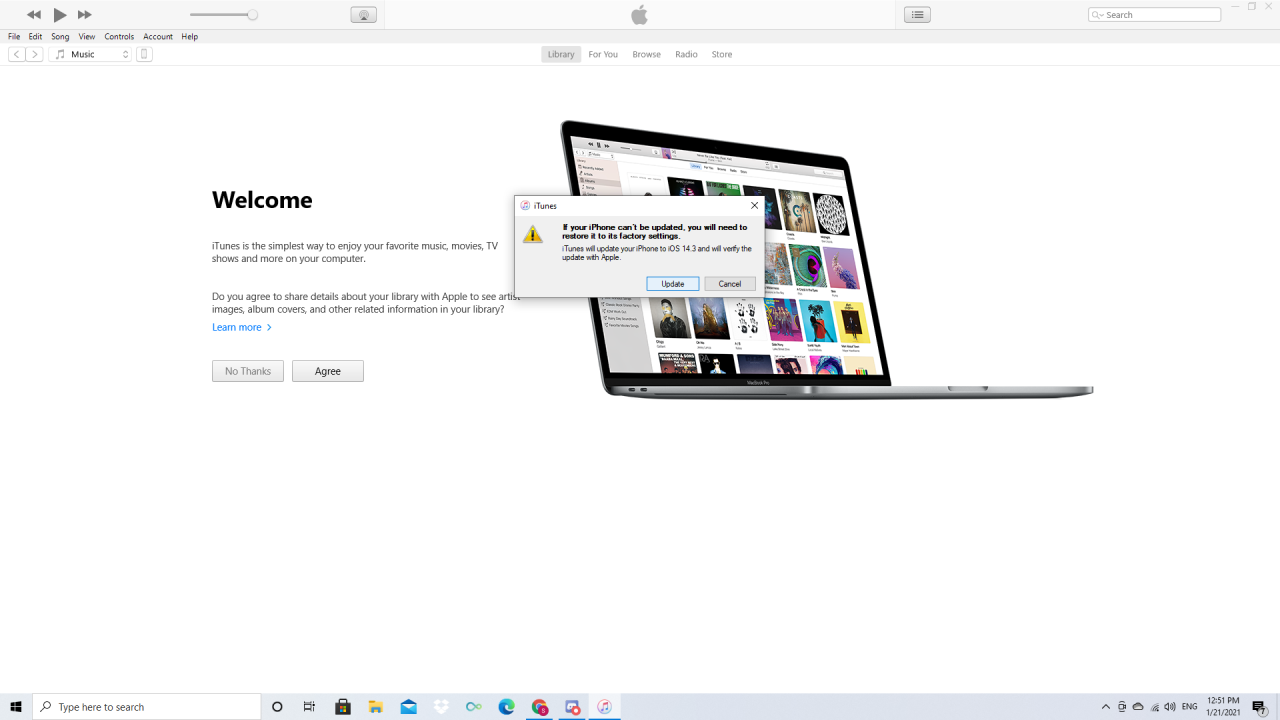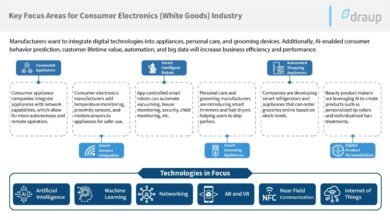Apple Replays Old Mistakes A Critical Look
Apple replays old mistakes, a disheartening trend that suggests a failure to learn from past missteps. This deep dive examines Apple’s history of flawed products and strategies, exploring the recurring patterns, external factors, and case studies that illustrate this concerning repetition. From missed market opportunities to flawed product designs, we’ll dissect the reasons behind these setbacks and speculate on potential future pitfalls.
The analysis delves into the historical context of Apple’s missteps, identifying recurring themes and external pressures. It also compares Apple’s failures to those of competitors, revealing common industry mistakes. Finally, the article offers lessons learned and potential strategies to avoid future errors, emphasizing the importance of adapting to evolving market demands and consumer preferences.
Historical Context of Apple’s Mistakes
Apple, a titan in the tech world, hasn’t always been flawless. Their journey is replete with missteps, some more significant than others. These failures, while painful at the time, often served as valuable learning experiences, shaping the company into the powerhouse it is today. Understanding these past missteps allows us to appreciate the present successes and the strategic adjustments Apple has made to maintain its position.Analyzing these errors provides valuable insight into the ever-shifting dynamics of the tech industry and the importance of adapting to market demands.
By examining the historical context, we can gain a more nuanced perspective on Apple’s current strategies and future prospects.
The Apple Newton MessagePad
The Apple Newton MessagePad, released in 1993, aimed to revolutionize personal digital assistants (PDAs). However, it fell short of expectations, largely due to its limited functionality and unreliable handwriting recognition technology. The market, at the time, was still nascent in terms of personal computing, and the expectations for a PDA were not yet fully defined. The prevailing perception of Apple during this period was that of a company that had lost its touch, struggling to keep up with the pace of innovation.
| Feature | Successful Product (e.g., iPhone) | Unsuccessful Product (e.g., Newton MessagePad) |
|---|---|---|
| Functionality | Highly versatile, integrating numerous applications (e.g., phone, camera, internet access) and offering a seamless user experience. | Limited functionality, primarily focused on note-taking and basic scheduling. The handwriting recognition, a core feature, was frequently unreliable. |
| Market Response | Widely adopted and embraced by consumers, driving a surge in smartphone adoption and setting new standards in mobile technology. | Met with lukewarm reception from consumers, ultimately failing to gain significant market share. |
| Technology | Advanced and refined technology, incorporating state-of-the-art components and constantly evolving to meet consumer demands. | Handwriting recognition technology was a significant weakness, lagging behind the expectations of the market and creating a negative user experience. |
| Pricing | Generally competitive and aligned with market standards, allowing for broad accessibility and fostering widespread adoption. | Priced at a level that did not attract consumers and was deemed too expensive for the product’s limitations. |
The Apple Lisa
Apple’s Lisa computer, released in 1983, was a pioneering effort in graphical user interfaces (GUIs). However, its high price point and limited applications hindered its widespread adoption. The market was dominated by IBM and other established players, who offered more affordable and functional alternatives. The public perception of Apple was one of a company pursuing innovative but ultimately impractical solutions.
The Apple IIgs
The Apple IIgs, launched in 1986, aimed to combine the success of the Apple II with advanced graphics capabilities. It faced stiff competition from other companies offering similarly equipped computers at more attractive price points. The perception of Apple was one of a company still struggling to balance innovation with affordability.
Recurring Patterns in Apple’s Errors
Apple, despite its remarkable success, has stumbled on occasion. Analyzing these past missteps reveals recurring patterns, providing valuable insights into the company’s decision-making processes and potential areas for improvement. Understanding these patterns can help anticipate future challenges and inform strategies for navigating them effectively.Identifying and understanding these recurring themes is crucial for evaluating Apple’s long-term viability and strategic direction.
By recognizing potential pitfalls, Apple can proactively address weaknesses and build resilience against future setbacks. This analysis is not intended as a critique but rather as a constructive examination of historical data to enhance future decision-making.
Recurring Themes in Apple’s Past Failures
Apple’s history is replete with instances where initially well-received products or strategies faltered. These instances often exhibit common threads, suggesting underlying systemic issues. This section explores these recurring patterns.
Apple seems to be repeating some past design missteps, a trend that’s unfortunately familiar. Meanwhile, Intel’s latest innovation, like intel unveils more efficient rack ready itaniums , shows a focus on performance and efficiency, a stark contrast to Apple’s seeming reluctance to adapt. Perhaps Apple needs to look beyond its own walled garden and learn from the advancements in other areas to avoid repeating these mistakes.
| Recurring Theme | Examples | Potential Causes |
|---|---|---|
| Ignoring Customer Feedback | The initial reception of the Apple Newton MessagePad, the ill-fated Apple Maps app, and the criticism of the original iPhone’s design are prime examples. | Sometimes, internal priorities or a focus on a specific vision can overshadow customer needs. A lack of effective channels for gathering and processing feedback can also contribute. |
| Over-reliance on Existing Strengths | The slow adoption of features like USB-C ports, or the resistance to change in mobile phone form factors, demonstrate this tendency. Apple has historically been successful with its existing products and services. This success can sometimes translate into a resistance to adapting and innovating. | The comfort and security associated with past successes can lead to a reluctance to embrace new technologies or approaches, even if they would benefit the company in the long run. |
| Underestimating Competition | The rise of Android and other mobile operating systems, and the emergence of rivals in specific markets (such as streaming services), highlight this. | This issue often stems from a sense of complacency and overconfidence in the company’s market position. Ignoring or misinterpreting the actions and innovations of competitors can have detrimental consequences. |
| Poor Market Timing | The launch of the Apple Watch in the early days, before the smartwatch market had fully developed, or the initial response to the Apple TV platform. | Understanding and anticipating market trends and the evolving needs of customers are essential. A lack of foresight or miscalculation of market readiness can lead to a slow or disappointing product launch. |
Systemic Issues Potentially Contributing to Patterns
Several systemic issues within Apple may contribute to these repeating mistakes. One is a potential tendency towards insular decision-making, where the input of external perspectives might be overlooked. This could stem from a culture of strong internal consensus. Another issue might be a focus on short-term gains over long-term strategic planning, leading to decisions that seem successful in the immediate future but lack long-term vision.
Leadership Styles and Company Policies
Apple’s leadership style, often characterized by a strong vision and centralized decision-making, has both advantages and disadvantages. This approach, while successful in many aspects, can sometimes lead to a lack of diverse perspectives and an inability to quickly adapt to changing market demands. Company policies related to product development, marketing, and customer service might also need review to ensure they are aligned with current market conditions and customer expectations.
External Factors Influencing Apple’s Mistakes
Apple’s journey, though often lauded for innovation, hasn’t been without its missteps. Understanding the external pressures and shifting landscapes that impacted Apple’s decisions is crucial to comprehending its successes and failures. External factors often play a significant role in shaping a company’s strategies and product choices, and this is certainly true for Apple.Beyond internal decisions, market forces, evolving technologies, and consumer preferences all exert pressure and influence on a company like Apple.
These forces can create unforeseen challenges, leading to missed opportunities or poorly-timed product launches. Recognizing these external pressures is key to a comprehensive understanding of Apple’s historical performance and its ability to adapt to future challenges.
Technological Landscape Shifts, Apple replays old mistakes
Technological advancements can quickly render products obsolete or create new markets that established players might initially overlook. Apple’s success often hinges on anticipating and capitalizing on these shifts. A failure to adapt to these changes can lead to a loss of market share and diminished consumer appeal. The rapid development of touch screen technology and mobile computing, for example, presented both opportunities and challenges for Apple.
Their initial hesitation to fully embrace touch interfaces in their early smartphone designs, influenced by the perceived strengths of their existing platform and user experience, created an opportunity for competitors.
Consumer Preferences and Market Trends
Consumer preferences are in constant flux, often driven by changing societal values, emerging trends, and the ever-present desire for innovation. Apple’s ability to gauge these preferences and adapt its products accordingly is essential for maintaining market leadership. A miscalculation in consumer sentiment, as seen in the initial reception of certain product features, can lead to disappointing sales and negative public perception.
Impact on Apple’s Decisions
The influence of external factors on Apple’s decisions is not uniform. Some factors, like a sudden surge in demand for specific types of devices, may create an opportunity for swift expansion and market capture. Other factors, like a prolonged economic downturn or a rapid shift in consumer taste, may require significant adjustments to product strategy or even business model.
Understanding the interplay of these factors allows a more nuanced evaluation of Apple’s product decisions and their impact on the company’s overall performance.
Relationship Between External Factors and Specific Products
| External Factor | Specific Apple Product | Impact |
|---|---|---|
| Shifting consumer preference for larger screens | iPod Classic | Market share decline, failure to adapt to the rising popularity of larger screen devices |
| Competition from Android smartphones | iPhone 3GS | Delayed introduction of key features, reduced competitive advantage |
| Emergence of social media | iPhoto | Limited ability to integrate social media features, decreased market share |
| Rise of portable media players | iPod Nano | Success in adapting to the market shift, leading to increased market share |
Case Studies of Specific Apple Failures
Apple, despite its remarkable success, has faced its share of setbacks. Examining these failures provides valuable insights into the company’s decision-making processes, the complexities of product development, and the unpredictable nature of consumer response. These failures, while painful, are crucial learning experiences, highlighting the importance of adaptability, market research, and continuous improvement.
The Apple Newton MessagePad
The Apple Newton MessagePad, launched in 1993, aimed to revolutionize personal digital assistants. However, its handwriting recognition technology proved unreliable, leading to frustrating user experiences. The device was plagued by significant technical limitations, which hampered its ability to compete with more polished, feature-rich, and reliable competitors. The device’s shortcomings ultimately resulted in a premature and disappointing demise.
- Product Lifecycle: The Newton’s lifecycle was short, marked by rapid decline in sales. It struggled to gain traction in the market due to its inability to meet user expectations. The market responded negatively to the technology’s limitations, resulting in low adoption rates.
- Reasons for Decline: The product’s shortcomings stemmed from poor handwriting recognition accuracy and limited functionality. The user interface, while innovative for its time, proved too complex for many users. The initial marketing campaign did not effectively convey the device’s strengths, failing to resonate with consumers and build a loyal customer base.
- Company Reaction: Apple eventually discontinued the Newton line, recognizing its inability to capture a significant market share. This decision, while acknowledging the failure, did not lead to a widespread public apology or elaborate explanation of the issues.
- Lessons Learned: The Newton failure highlighted the critical importance of rigorous testing and market research. It underscored the need for a thorough understanding of user needs and expectations before introducing a product to the market. The company’s inability to adapt to changing consumer preferences and improve upon the technology’s shortcomings contributed to its downfall.
The Apple Lisa
The Apple Lisa, a groundbreaking personal computer introduced in 1983, featured a graphical user interface and a mouse, concepts that became staples of personal computing. However, the high price point, combined with limited software availability and complex operating system, hindered its widespread adoption. This, in combination with an aggressive marketing campaign, failed to connect with consumers and ultimately led to its failure.
- Product Lifecycle: The Lisa’s lifecycle was marked by initial hype and subsequent disappointment. While innovative for its time, it failed to capture a significant market share due to various shortcomings. The product struggled to gain traction, leading to a limited lifespan.
- Reasons for Decline: The Lisa’s high price point made it inaccessible to a large portion of the target market. The limited software library made the computer less attractive and practical for consumers. The complexity of the operating system and a lack of effective marketing strategies hindered the product’s adoption and recognition.
- Company Reaction: Apple eventually discontinued the Lisa, focusing its resources on the more successful Macintosh line. There was no significant public acknowledgement or apology regarding the Lisa’s failure, but the company learned from the experience.
- Lessons Learned: The Lisa’s failure underscored the importance of balancing innovation with affordability and practicality. It highlighted the significance of a robust software ecosystem and well-defined marketing strategies. The company recognized the need to adapt to market demands and address consumer needs to ensure product success.
Comparison Table: Successful vs. Unsuccessful Products
| Feature | Successful (e.g., Macintosh) | Unsuccessful (e.g., Newton) |
|---|---|---|
| Price Point | Competitive, often within the target market’s reach. | High, often inaccessible to the target market. |
| Software Ecosystem | Extensive, with a wide variety of applications and compatibility. | Limited, hindering practicality and desirability. |
| User Interface | Intuitive, user-friendly, and easy to learn. | Complex, difficult to navigate, and challenging to master. |
| Hardware Reliability | High, with consistent performance and minimal malfunctions. | Low, leading to user frustration and frequent technical issues. |
| Marketing Strategy | Effective, clearly communicating product benefits and value proposition. | Ineffective, failing to resonate with the target audience and communicate value effectively. |
Lessons Learned and Potential Future Mistakes
Apple’s history is replete with both dazzling successes and humbling setbacks. Analyzing these past missteps provides valuable insights into potential pitfalls in future ventures. Understanding the factors contributing to these failures, coupled with the lessons learned, can equip Apple to navigate future challenges more effectively. This analysis delves into potential future product or market approaches that might encounter similar issues, highlighting mitigation strategies to avoid repeating past errors.A key takeaway from Apple’s past is the importance of understanding user needs and market trends.
Ignoring or misinterpreting these can lead to products that fail to resonate with consumers. Furthermore, maintaining a balance between innovation and user familiarity is crucial. While pushing boundaries is vital, abandoning existing strengths can alienate loyal customers. This analysis will explore specific potential future risks and offer practical solutions to address them.
Recurring User Experience Issues
Apple has faced criticism regarding user experience, particularly with overly complex interfaces or features that are difficult to understand or use. This issue arises when the company prioritizes internal innovation over the user’s perspective. A potential future area of concern involves new software features for the Apple Watch or the iPad. These could be overloaded with functionalities that confuse users rather than simplify their tasks.
Apple seems to be repeating some past missteps, focusing too much on incremental improvements rather than truly groundbreaking innovations. This echoes in the consumer electronics space, where choosing a big screen TV requires careful consideration of factors like resolution, refresh rate, and smart features. The big picture choosing a big screen tv really highlights the complexities of modern tech purchases.
Ultimately, Apple’s approach feels a bit predictable, like they’re not fully grasping the evolving needs of consumers.
Overlooking Emerging Market Trends
Ignoring emerging trends in the technology market has been another recurring theme. Apple has occasionally missed the mark on products or features that were gaining traction in the marketplace, like foldable phones or more specialized accessories for specific segments. Future potential missteps could include failing to anticipate the evolution of augmented reality (AR) or metaverse applications, or neglecting the increasing demand for environmentally friendly, sustainable tech.
The success of other companies in these emerging markets provides valuable insights for future product development.
Maintaining a Balance Between Innovation and Familiarity
Apple’s strength lies in its ability to blend cutting-edge innovation with familiar, user-friendly designs. A potential risk involves becoming too focused on revolutionary concepts, neglecting existing features and user expectations. This could result in a disconnect between new products and the established Apple ecosystem. This is exemplified by the initial reception of some of Apple’s product redesigns, highlighting the need for careful consideration of user feedback and maintaining a balance between novelty and familiarity.
Potential Future Product Risks and Mitigation Strategies
| Potential Future Product Risk | Mitigation Strategy |
|---|---|
| Overly complex user interfaces for new software features on the Apple Watch and iPad | Thorough user testing and iterative design, focusing on simplicity and intuitive navigation. Prioritize user feedback throughout the development process. |
| Failure to anticipate and adapt to evolving market trends in emerging technologies (AR, Metaverse, sustainable tech) | Invest in market research and trend analysis to identify emerging needs and preferences. Establish partnerships and collaborations with developers and innovators in these sectors. |
| Neglecting existing features and user expectations in pursuit of revolutionary concepts | Maintain a clear understanding of the core strengths of the existing Apple ecosystem. Ensure new products seamlessly integrate with existing devices and software. Incorporate user feedback into the design process. |
| Ignoring environmental concerns in product design and manufacturing | Implement environmentally conscious manufacturing processes. Prioritize sustainable materials and reduce electronic waste. Communicate these efforts clearly to consumers. |
Comparing Apple’s Mistakes to Competitors: Apple Replays Old Mistakes
Apple, despite its remarkable success, has not been immune to missteps. Understanding these errors in the context of similar blunders by competitors provides valuable insights into industry dynamics and potential pitfalls. Comparing strategies and failures can highlight recurring patterns, allowing for more informed decision-making and avoiding future missteps.Analyzing Apple’s mistakes alongside those of its competitors reveals surprising similarities and crucial distinctions.
While Apple often faces criticism for perceived arrogance or an overly insular approach, its competitors have also encountered difficulties in adapting to evolving consumer demands or maintaining market leadership. Understanding these shared and unique challenges offers a more comprehensive view of the competitive landscape.
Common Mistakes in the Tech Industry
Many companies, including Apple’s competitors, have stumbled upon similar obstacles in their product development and market strategies. A common thread is the failure to anticipate shifts in consumer preferences. Ignoring evolving trends or becoming too entrenched in existing successes often leads to missed opportunities and diminished market share. Furthermore, overconfidence and a reluctance to embrace innovation can also be detrimental.
Companies may become complacent, overlooking the need for continuous improvement and adaptation.
Apple’s Failures Compared to Competitors
A comparative analysis reveals that Apple’s failures often stem from a combination of factors. While some competitors have faced similar issues, Apple’s missteps sometimes appear more closely tied to its meticulous approach to design and brand image. Competitors, on the other hand, might struggle with executing their vision or maintaining consistent quality across various product lines. For example, some competitors may struggle to balance innovation with affordability, leading to products that are either too expensive or lacking in functionality.
Illustrative Table of Strategies
| Characteristic | Apple | Samsung | Microsoft | |
|---|---|---|---|---|
| Product Design | Emphasis on seamless integration and premium aesthetics; sometimes leading to higher price points | Focus on a wide range of options, including budget-friendly models; sometimes compromising on design consistency | Emphasis on software integration and user experience, often sacrificing a distinct hardware design | Historically focused on software and services, sometimes lagging in hardware innovation |
| Market Penetration | Historically strong focus on specific, premium market segments; occasional difficulty penetrating emerging markets | Aggressive market penetration strategy across diverse segments, sometimes leading to inconsistent brand perception | Focus on broad market penetration through diverse product lines; sometimes leading to a diluted brand image | Focus on business-oriented solutions, sometimes struggling to engage consumer markets |
| Innovation Approach | Incremental innovation within a carefully defined ecosystem; sometimes slow to embrace disruptive technologies | More rapid innovation and adaptation to market trends; sometimes leading to inconsistencies in quality control | Emphasis on rapid innovation across diverse fields; sometimes sacrificing a unified user experience | Emphasis on existing technology, sometimes lagging in cutting-edge innovation |
The table above highlights how Apple, while meticulous in its product design and market penetration, might sometimes lag in adapting to new technologies or evolving market trends. Competitors like Samsung may prioritize broad market reach, but this might compromise the brand’s perceived value. Google, with its software-first approach, can face difficulties in integrating these aspects with hardware. Microsoft, focused on enterprise solutions, might miss out on consumer trends.
These contrasting strategies underscore the complexities of navigating the modern tech industry.
Apple seems to be replaying some old mistakes, particularly with their recent software decisions. Interestingly, this echoes the ongoing Linux licensing battles, like the one SCO is taking further here , demonstrating a pattern of resistance to open-source principles. Ultimately, Apple’s history suggests a tendency to repeat past missteps, potentially hindering innovation and user choice in the long run.
Industry Trends Overlooked
Apple, in its pursuit of premium aesthetics and brand loyalty, might have sometimes overlooked the importance of more inclusive design elements, such as accessibility features or the adaptation to different user needs. This is a trend that competitors have recognized and implemented in their products, potentially opening up broader market segments. The rise of sustainable practices in the tech industry is another trend that Apple might need to incorporate more proactively.
Potential Implications for Future Strategies
Apple’s history, while marked by innovation, also reveals crucial lessons learned from past missteps. Understanding these errors is paramount for future strategic decisions, enabling the company to avoid repeating past mistakes and fostering a more robust and adaptable approach to product development and market engagement. By analyzing the patterns of past failures, Apple can create more resilient and consumer-centric products, services, and overall strategies.Analyzing past missteps allows Apple to identify recurring themes and patterns that influence future decisions.
This proactive approach enables a more comprehensive understanding of the factors contributing to success and failure, leading to more informed and calculated strategic choices. Ultimately, this insight allows Apple to anticipate potential pitfalls and create more successful strategies for the future.
Adapting to Changing Market Conditions
Apple’s past successes often hinged on anticipating and adapting to evolving market trends. Failures, conversely, highlight the importance of staying attuned to changing consumer preferences. This necessitates a dynamic approach to product development and marketing strategies, constantly monitoring and responding to shifts in consumer needs and technological advancements. A rigid, unchanging approach can lead to stagnation and irrelevance in a rapidly evolving market.
Staying agile is critical for maintaining market leadership.
Leveraging Lessons from Past Mistakes
By meticulously studying past product failures, Apple can identify recurring themes and underlying factors. This includes understanding the market response to specific features, design choices, or pricing strategies. This understanding allows the company to make more informed decisions in the future. The company can learn from mistakes made by competitors and adjust its strategies accordingly.
Internal Communication and Process Improvements
Effective internal communication is essential for ensuring that lessons learned from past mistakes are disseminated and incorporated into future strategies. A transparent communication channel allows for open dialogue and feedback, fostering a culture of continuous improvement. This includes mechanisms for capturing and analyzing feedback from various departments and stakeholders. A robust system for gathering and evaluating internal feedback is crucial for identifying potential issues and making necessary adjustments.
Possible Future Strategies to Avoid Repeating Past Mistakes
| Potential Mistake | Preventive Strategy |
|---|---|
| Ignoring evolving consumer preferences | Conduct thorough market research and consumer surveys to identify evolving preferences. Implement agile development cycles allowing for quick adaptation to changing demands. |
| Over-reliance on existing strengths | Embrace innovation by exploring new technologies and product categories. Foster a culture of experimentation and risk-taking within defined boundaries. |
| Poor product launch strategies | Thorough pre-launch testing and market feedback gathering. Implement targeted marketing campaigns tailored to specific demographics and preferences. |
| Lack of competitive analysis | Establish a comprehensive competitive analysis framework, monitoring rivals’ strategies and innovations. Develop contingency plans for potential market shifts. |
| Inadequate internal communication | Establish regular communication channels for feedback and knowledge sharing. Implement mechanisms for collecting and analyzing employee feedback. |
Illustrative Examples of Product Failures

Apple, despite its renowned success, has faced its share of product setbacks. These failures, while often overshadowed by triumphs, offer valuable insights into the company’s decision-making processes and the complexities of the tech market. Understanding these missteps can illuminate the path to future success.
The Apple Newton MessagePad
The Apple Newton MessagePad, launched in 1993, aimed to be a personal digital assistant (PDA). It promised a revolutionary way to organize information, but ultimately fell short of expectations. Its handwriting recognition software was notoriously unreliable, often misinterpreting input. The device’s awkward form factor and lack of compelling applications also contributed to its failure. User frustration with the technology’s limitations, coupled with the emergence of more user-friendly competitors, led to the MessagePad’s demise.
The Apple Lisa
The Apple Lisa, launched in 1983, represented a significant technological leap, but its high price point and limited market appeal made it a commercial disappointment. The Lisa’s innovative graphical user interface (GUI), while ahead of its time, did not translate into widespread adoption. The steep price tag, coupled with the limited availability of compatible software and peripherals, created a significant barrier to entry for potential consumers.
This highlighted the crucial importance of not just innovative technology but also accessible pricing and a robust ecosystem of supporting products.
The Apple iBook G4
The Apple iBook G4, launched in 2003, was a portable, stylish laptop. While appealing visually, the iBook G4’s design choices proved detrimental to its longevity. The fragile hinge design, coupled with the susceptibility to overheating issues, negatively impacted user experience. Frequent reports of hardware failures and technical problems, combined with emerging competitors offering more durable and powerful alternatives, contributed to its relatively short lifespan.
The example illustrates the necessity of rigorous quality control and consideration for the long-term durability and usability of products.
The Apple Power Mac G4 Cube
The Apple Power Mac G4 Cube, launched in 2000, embodied a unique, compact design. Its innovative form factor, however, came with a price. The Cube’s limited expansion slots and internal design constraints made upgrades and maintenance cumbersome. Furthermore, the premium price tag, despite the appealing design, made it less attractive compared to competitors offering more flexible and upgradeable options.
This case study demonstrates that aesthetic appeal alone is insufficient to guarantee commercial success. Practical considerations and affordability are equally important.
Summary Table
| Product | Key Features | Public Reception | Factors Contributing to Failure |
|---|---|---|---|
| Apple Newton MessagePad | PDA, handwriting recognition | Negative, unreliable software | Unreliable handwriting recognition, awkward form factor, limited applications |
| Apple Lisa | GUI, innovative technology | Limited adoption | High price point, limited software/peripherals |
| Apple iBook G4 | Portable laptop, stylish design | Negative, frequent hardware issues | Fragile hinge, overheating issues, poor quality control |
| Apple Power Mac G4 Cube | Compact design, innovative form factor | Limited appeal | Limited expansion slots, cumbersome upgrades, high price tag |
Final Summary

Ultimately, Apple’s tendency to repeat past mistakes raises crucial questions about its ability to adapt and innovate. While the company’s past successes are undeniable, understanding these recurring patterns and external influences is vital for future success. By examining past failures and lessons learned, Apple can hopefully avoid repeating the same errors and maintain its position as a leader in the tech industry.







